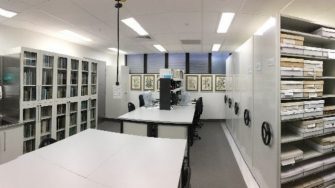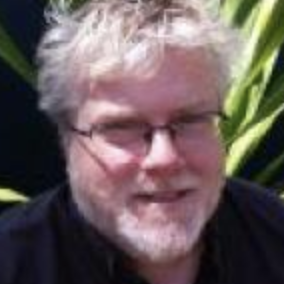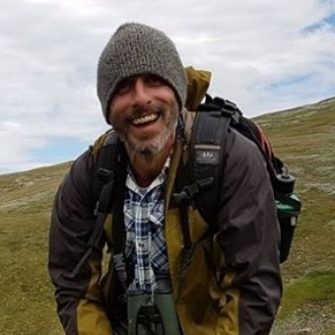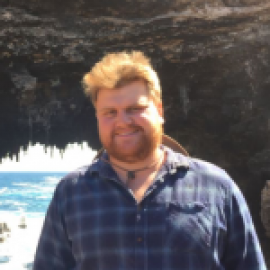
The John T. Waterhouse Herbarium is internationally registered and holds over 61,000 specimens, including vascular plants and fungi, algae, lichens and non-vascular plants.
Most of our specimens are Australian, with the majority from New South Wales and a smaller collection from other states and countries.
At UNSW, the Herbarium is an important resource for research and teaching. It’s also essential for the identification of plants. Individual specimens may be cited by researchers in their publications as vouchers from which original data has been obtained. This data includes morphological, molecular, chemical, histological, ecological and palynological data.
The specimens in the Herbarium also act as records, which map the temporal and spatial distributions of organisms. These records are essential for research into the spread of invasive species and changes in distribution due to urbanisation and climate change.
Research at UNSW Biological, Earth and Environmental Sciences has utilised the John T. Waterhouse Herbarium to cover diverse areas such as:
- molecular systematics
- mycorrhizal taxonomy
- environmental studies
- vegetation mapping and management
- land management
- biogeography
- ecology
- biodiversity
- arid zone studies.
The Herbarium collection is available by appointment within business hours for staff, students and external visitors at UNSW. Specimens are also available for loan to other institutions for study. Staff and students can request loans through the Herbarium of material from other herbaria.
All undergraduate students are allowed supervised access to the Herbarium. Those who may need unsupervised access in their studies or research are given the training and induction to do so.
-
Herbaria are collections of pieces or whole individuals of plants, fungi, lichens or algae that have been preserved so that their morphological features are maintained. Mostly, these specimens are pressed and dried, but sometimes they may be dried without pressing (such as fungal collections, bark and timber) or preserved in spirit. Each specimen is tagged, named and labelled accurately with details of where, when and by whom it was collected. A description of the plant's habitat with details such as the soil, aspect and surrounding plant community are also included in the label.
Carefully prepared and curated specimens can last indefinitely, and many specimens in the world still exist from the 18th century. The oldest specimens in the John T. Waterhouse Herbarium include a grass, Eriochloa pseudoacrotricha, collected in western NSW in 1892 and Sporodanthus gracilis, collected in nearby Centennial Park in 1897.
-
The first herbarium specimen database was on Microsoft Access, funded by the U Committee and went live in 2005. Databasing the backlog of older specimens was helped again through the support of the U Committee to fund casual databasers, along with the generous time given by many volunteers. UNSW received funds from the Council of Heads of Australasian Herbaria (CHAH) and the Atlas of Living Australia (ALA) to database one of our significant collections - the Alligator River Region collection - and to migrate to an improved database platform. In February 2020, UNSW joined The Australasian Virtual Herbarium.
Currently, there are c. 22,000 specimens databased (c. 35% of the total collection); database records are available to all users at UNSW AVH.
-
In 1960, the herbarium was founded by Mary M. Hindmarsh, Alec Wood and Don Blaxell as the UNSW Herbarium in the School of Botany at Ultimo. In 1962, the School of Botany and the Herbarium moved from Ultimo to the newly built Biosciences Building at UNSW Kensington campus. In the same year, John Waterhouse joined the school as a lecturer and became the first Director of the Herbarium.
In 1981, John Waterhouse was responsible for obtaining international registration through the International Association of Plant Taxonomists of the herbarium in Index Herbariorum. John was also successful in obtaining funds to expand and renovate the herbarium but sadly, never saw this happen; he died in April 1983. The newly refurbished herbarium, opened in June 1983, was named the John T. Waterhouse Herbarium in his honour.
Over time, the collection has expanded and required a newer space with improved facilities to manage pest control without the need for chemicals. As part of a larger move of UNSW Biological, Earth and Environmental Sciences, the Herbarium moved in October 2017 to its present location in the Biosciences South Building.
-
Explore our list of Herbarium-related resources from the Australian Plant Name Index to NSW Flora Online.
-
The herbarium holds an important library, which is vital for teaching and research purposes. It’s available to staff and students. The library contents can be found at John T. Waterhouse Herbarium Library Catalogue. The library contents can be found at John T. Waterhouse Herbarium Library Catalogue.
UNSW
Our people
Contact Us
For all herbarium enquiries, please call or email.
T: +61 2 9385 3274



